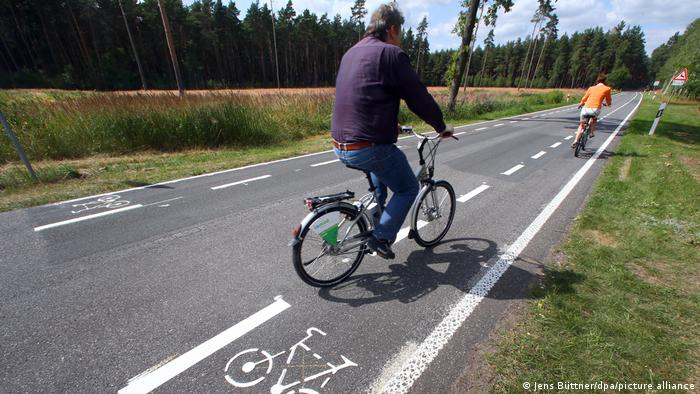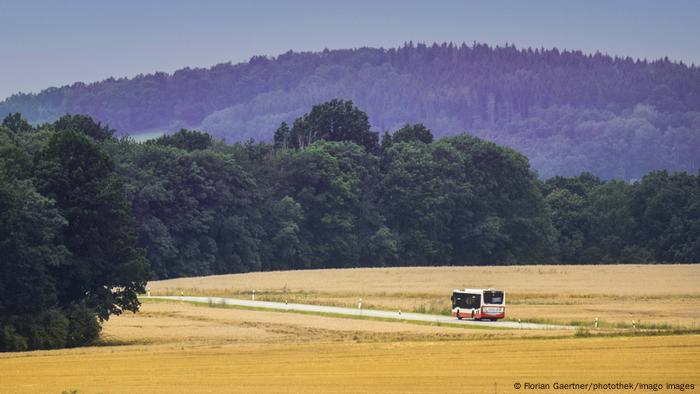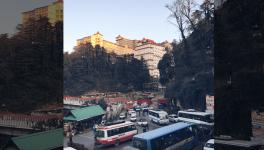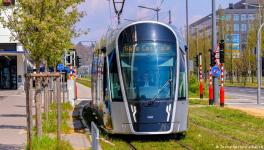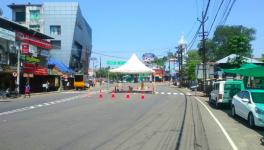Tschüss, Cars: a Path to Sustainable Transportation Emerges in German Countryside
Car ownership in rural parts of Germany is extremely high thanks to poor access to public transportation
"In our village, there is almost no one who doesn't own a car. Two, three, four cars in a family is quite normal," said Britta Seifert. She lives deep in the Eifel region of western Germany, in Krälingen, a little village with fewer than 400 inhabitants. When it comes to cars, her village isn't exceptional.
If you live in the countryside in Germany, it's likely that you drive a car. Trains and buses run infrequently in many regions, and they don't connect every village. So it's no surprise that 90% of households in rural parts of Germany own at least one car. In cities, the situation is different. There, almost half of households manage without their own car.
It takes Seifert about 20 minutes to travel by car to the next largest town. The bus only runs once an hour and takes twice as long. "This is why our public transport is so unattractive," she said. "An errand that takes me about an hour by car takes me three hours by bus. "
Car privileges discourage use of public transport
In a move meant to tackle climate change, Germany's new government has taken aim at reducing traffic in rural areas. The coalition agreement stipulates that all citizens be provided with well-connected, affordable, climate-friendly transportation options suitable for everyday use. But there hasn't been much movement yet, said Andreas Knie. He heads the digital mobility research group at the Social Science Research Center Berlin.
"We still have an incredible car subsidy policy in Germany," he told DW. "The new federal government has chosen not to attack the privileges of cars. For example, there are subsidies and tax breaks for people who commute by car and for those who drive a diesel engine or a company car, and there is no general speed limit."
If you removed these benefits, driving a car would no longer be as attractive, said Knie. And if drivers had to pay for the actual costs of driving — for example, if environmental and climate damage or land consumption were also taken into consideration — owning a car would become less attractive.
Rethinking the last mile
But it's not enough to discourage the desire to drive. A vicious cycle also needs to be broken. Few people in rural areas currently use public transport. That leads to reduced options, which leads to even fewer users.
But that could change, especially if the main routes between larger towns and cities were connected by buses and trains that run regularly. People coming from farther away could board at these transport hubs. "You have to rethink the famous last mile. Everyone needs to be able to get to a hub without their own car. Digitalization and smartphones could play a big role,” Knie said.
Bike lanes could be installed on country roads by re-allocating existing space
There are many potential solutions for how to organize transport to major hubs. Those who drive their own cars could give others a lift. Subsidized taxis could be called when needed. Villages could use community buses driven by volunteer drivers or they could purchase shared e-cars. Ride-sharing benches are another option: Sitting on one would signal to passers-by that you need a lift.
Walking and biking have a role to play
The last mile could also be covered by bicycle. But that requires a safe bike lane system, which is largely non-existent in rural areas at the moment, according to Knie. "Every road must have a safe and designated bike lane. We don't have to seal additional surfaces and create new paths to achieve this. We just have to reallocate space," he said, pointing to examples in the Netherlands, Denmark and Scandinavian countries.
Buses in rural parts of Germany run too infrequently to be practical for many people
It's worth noting that none of these countries are major car producers, said Knie. In Germany, on the other hand, any attempt to reduce car traffic would be seen as an attack on the car industry and, thus, on jobs. But biking and walking have a lot to offer. Almost half of the distances traveled in rural areas are less than four kilometers long and could easily be done by bicycle or on foot, he said.
Flooding slows down progress
In Krälingen, too, bike paths are in short supply. Even so, for a while, Britta Seifert's daughter, now 17, would cycle to school on country roads. "She often complained that cars would come dangerously close to her when passing," Seifert said.
In the meantime, her daughter has switched to a micro-car, which minors are allowed to drive. This means that the three-member Seifert household owns three cars.
But improving public transportation is a topic of discussion in the region around Krälingen, said Seifert, who is an honorary councilor in her Altenahr municipality. The first projects have already begun. A few ride-sharing benches have been installed and subsidized taxis for senior citizens and schoolchildren have been set up. But the disastrous flooding in the Ahr valley last summer has halted new projects, said Seifert.
"Now roads have to be built or repaired. But I think there will be more to come in the future."
Edited by: Kristie Pladson
Get the latest reports & analysis with people's perspective on Protests, movements & deep analytical videos, discussions of the current affairs in your Telegram app. Subscribe to NewsClick's Telegram channel & get Real-Time updates on stories, as they get published on our website.









